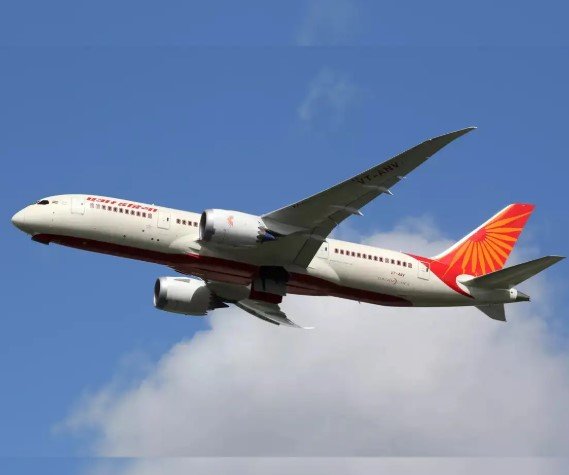Parliament erupts as opposition questions Civil Aviation Ministry over lapses, delayed probe, and possible sabotage angle
More than a month after the horrific crash of Air India Flight AI-171 that killed 260 people, the Indian government finds itself under fire for a string of ignored safety violations. The Ministry of Civil Aviation revealed on Monday that nine show-cause notices had been issued to the airline in the past six months—yet only one resulted in enforcement.
That revelation, made during the Monsoon Session of Parliament, triggered angry outbursts from MPs across party lines. As the nation still mourns its dead, lawmakers are now demanding transparency, accountability, and clarity on whether this disaster could have been prevented.
The Flight That Never Came Back
Flight AI-171, en route from Ahmedabad to London via Delhi, went down minutes after takeoff on June 12. It plunged into a residential area, killing all 241 passengers and crew onboard, along with 19 residents on the ground.
The crash was India’s deadliest civil aviation disaster in over a decade. And while the public awaited answers, what they got instead on Monday was a shocking admission: Air India had been on the regulator’s radar for months.
Minister of State for Civil Aviation Murlidhar Mohol, responding to over two dozen MPs, admitted that the airline had received nine show-cause notices for five separate violations since January 2025. But enforcement action was taken in just one case.

Parliament Explodes Over “Lip Service” to Safety
The admission didn’t sit well. CPI(M) MP Dr. John Brittas led the charge, questioning whether the ministry had ignored red flags and allowed a ticking time bomb to fly.
He asked plainly: “Were there technical faults or warnings that preceded the crash?”
Mohol, cautious and tight-lipped, said enforcement was taken in one instance, but refused to elaborate on the other eight. The silence was deafening.
TMC’s Derek O’Brien demanded to know whether the government had ignored safety audits or inspection reports. “This isn’t negligence,” he thundered, “This borders on criminal apathy.”
And then came a sharp dig from DMK MP Kanimozhi NVN Somu: “Was it just mechanical failure, or is there a possibility of sabotage?”
Mohol’s response: “Every aspect is being looked into.” No confirmation. No denial. Just a vague attempt to stall further outrage.
What Were the Violations? No One Knows
The ministry has so far refused to publish the specific contents of the nine show-cause notices. But aviation analysts say that’s unusual—especially after a fatal crash.
A former Directorate General of Civil Aviation (DGCA) official, speaking on condition of anonymity, said: “Even one notice should be treated seriously. Nine is a pattern. It means there’s a systemic issue—and possibly a culture of non-compliance.”
Here’s what we know so far:
-
Notices Issued: 9
-
Separate Violations: 5
-
Enforcement Actions Taken: 1
-
Crash Investigation Status: Preliminary report submitted July 12
-
Final Report: Pending
One sentence: No one outside the ministry has seen the full report yet.
Safety Warnings and Corporate Culture
The crash of AI-171 has now reignited questions about how seriously Indian carriers—especially legacy ones like Air India—take internal safety protocols.
A whistleblower who worked in Air India’s engineering division until earlier this year told Tribune News Service under anonymity: “We flagged maintenance issues. Sometimes spares were reused beyond advised cycles. The culture was—just patch it up and fly.”
That statement hasn’t been verified independently, but it aligns with broader concerns raised in Parliament and by former DGCA insiders.
Aviation safety experts list the following possible red flags that should have triggered stronger enforcement:
-
Non-compliance in scheduled maintenance
-
Delayed engine checks
-
Faulty sensor readings ignored
-
Internal flight data reporting anomalies
-
Crew duty time violations
Investigation Timeline Leaves Families Waiting
Minister Mohol confirmed that the Aircraft Accident Investigation Bureau (AAIB) submitted its preliminary report on July 12. But that’s still only a first step. A full probe could take up to a year, or more.
Meanwhile, families are in limbo. Legal teams are preparing class-action lawsuits. Insurance payouts remain stuck. And many still don’t know exactly how their loved ones died.
One grieving father from Surat, who lost his daughter in the crash, told reporters outside Parliament on Monday: “If they knew there were safety violations and didn’t act, then this isn’t just a tragedy. It’s a cover-up.”
Data, Facts, and The Troubling Pattern
Here’s a look at India’s civil aviation safety record over the past five years:
| Year | Major Incidents | Fatalities | Show-Cause Notices Issued |
|---|---|---|---|
| 2021 | 2 | 17 | 11 |
| 2022 | 1 | 4 | 8 |
| 2023 | 0 | 0 | 6 |
| 2024 | 3 | 39 | 13 |
| 2025* | 1 (AI-171) | 260 | 9 (till July) |
The numbers show a concerning uptick—not just in fatal incidents, but in the volume of show-cause notices too. And if enforcement doesn’t match the warnings, critics argue, what’s the point of issuing them at all?
